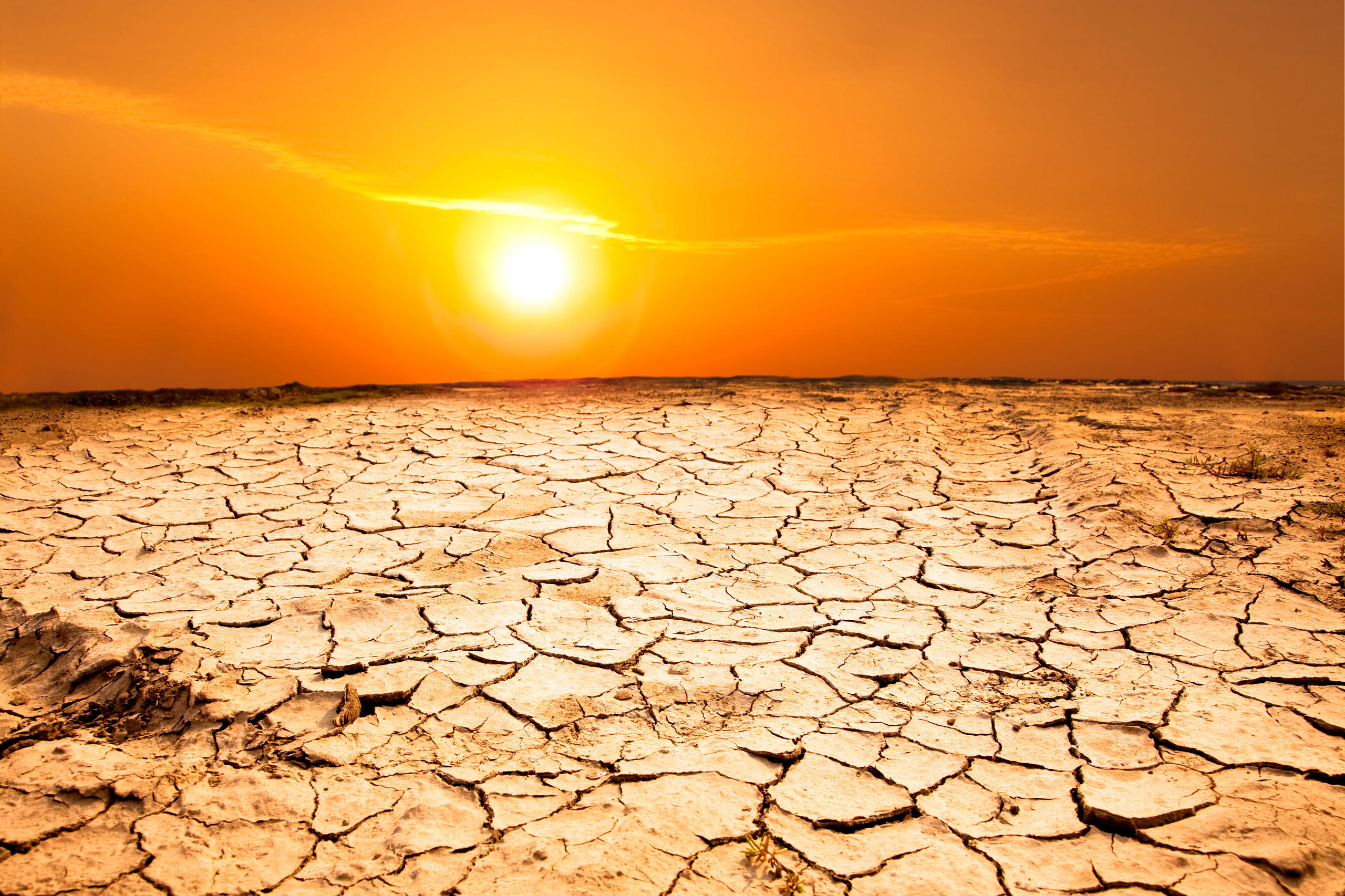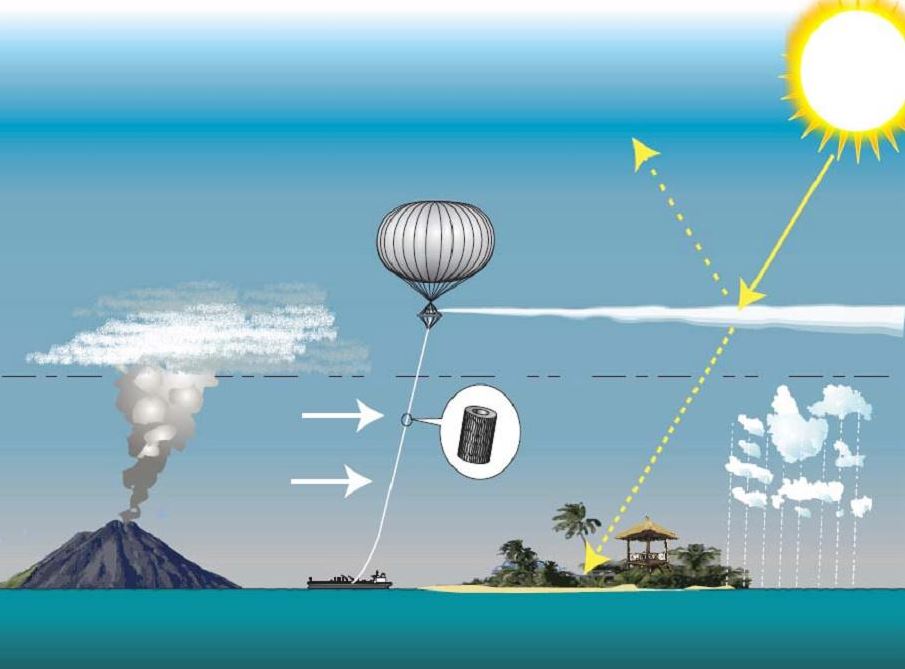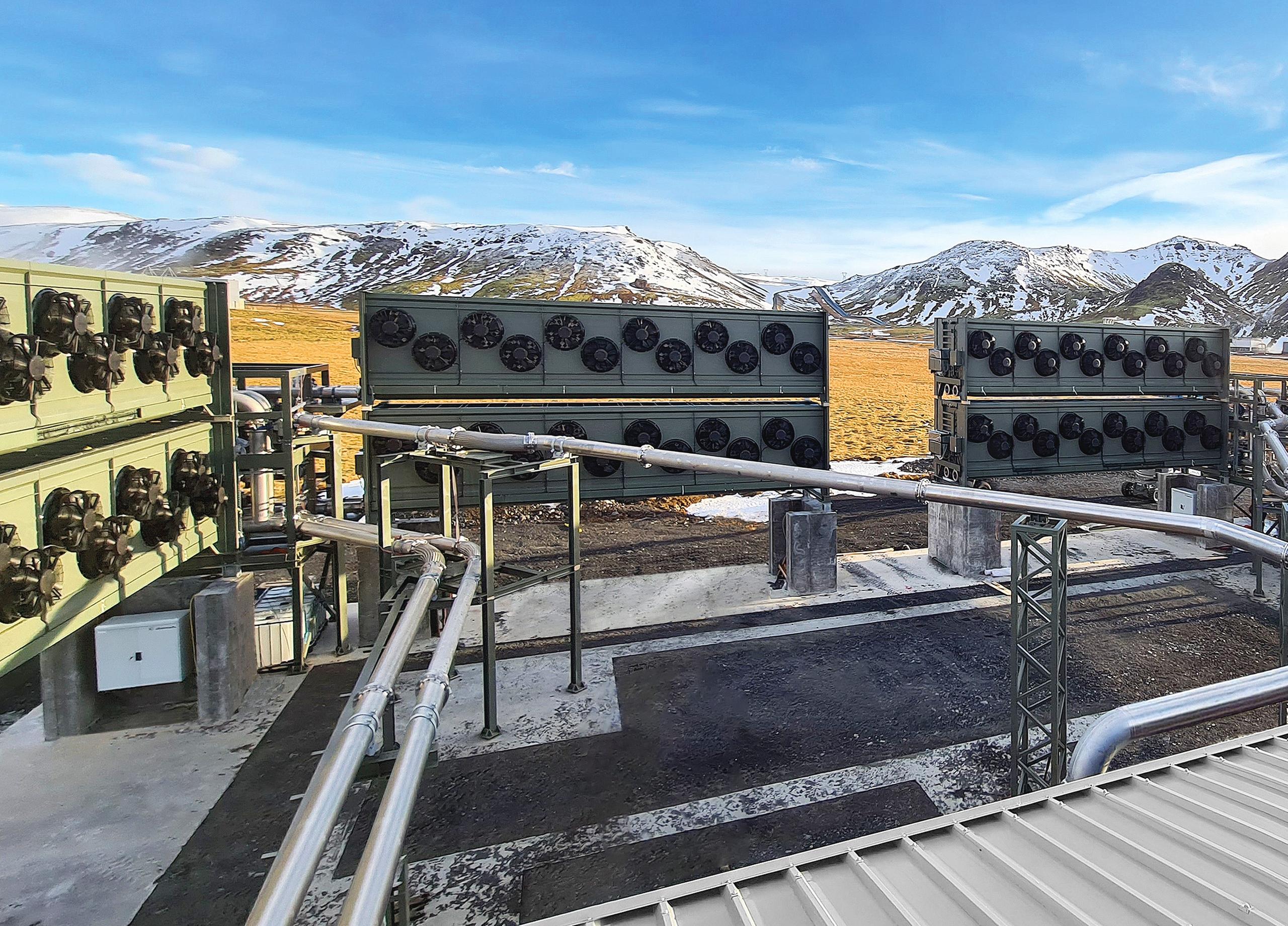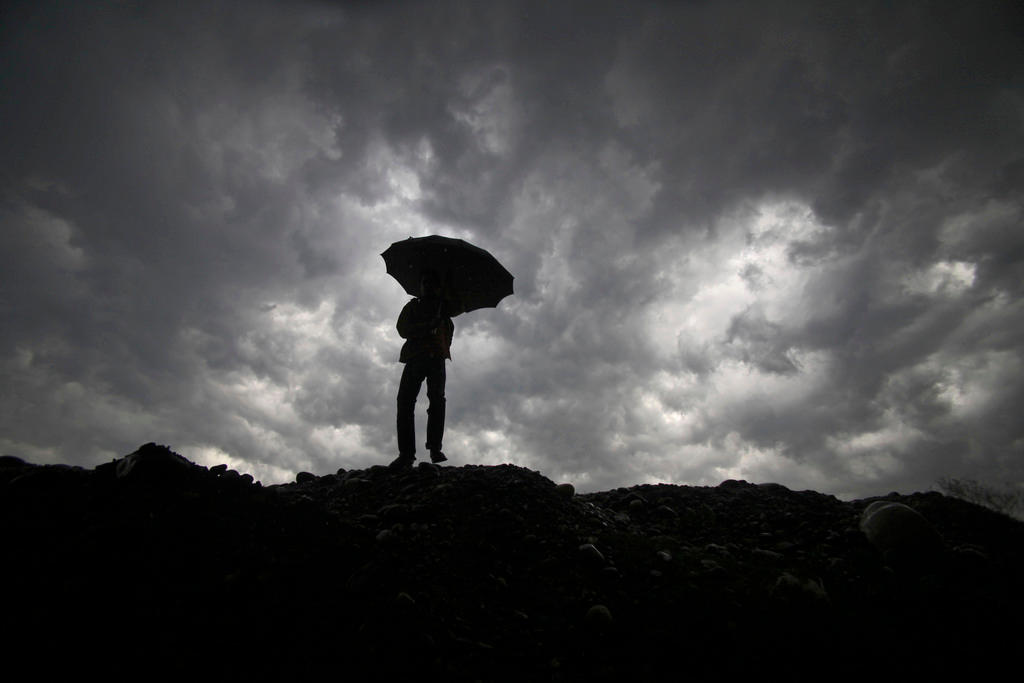
Tempting solution: cool the planet artificially

Technologies that deflect the sun’s rays could prevent heatwaves and droughts. Yet they could also have undesiderable effects on ecosystems and human populations. Switzerland wants to see a study on the potential and risks of these technologies. But some scientists are calling for an immediate ban on an idea they believe to be “harmful to humanity”.
A plane with a wingspan of about 100 metres takes off from an airport in the US. There are no passengers or goods on board. There isn’t even a pilot. This aircraftExternal link is remote-controlled from the ground and is equipped with storage tanks and a vaporiser. Once it reaches the stratosphere, at an altitude of about 20km, it disperses billions of particles of sulphur dioxide. The aim is to reflect back a portion of the sun’s rays into outer space.
The year is 2042 and the planet has heated up 1.5° C over what it was in preindustrial times. Most coral reefs have disappeared and agricultural production in tropical regions is in drastic decline. Every year, tens of millions of people have to flee coastal cities due to the rise of sea levels and the most arid zones due to worsening drought.
Spraying molecules of sulphur dioxide into the stratosphere would bring a temporary reduction in temperatures at the earth’s surface, as happens after a major volcanic eruption. In 1991, dust cast off into the atmosphere by the eruption of Mount Pinatubo in the Philippines cooled the earth by 0.5 °C for a period of two years.

This is a hypothetical scenario, of course. But it’s not entirely far-fetched. Climate engineering or geo-engineering, involving deliberate large-scale manipulation of the Earth’s climatic system, has long been thought politically taboo. Today it meets with growing interest.
Not long ago, the US government announced the launch of a research programmeExternal link involving agencies such as NASA to study how the amount of sunlight reaching the Earth might be controlled, for example by spreading reflective particles into the stratosphere or into lower-lying clouds.
This kind of intervention, known as solar radiation modification or SRM, was the focus of a round-table meeting held last October in Geneva on the occasion of the Science and Diplomacy Anticipation Summit (GESDAExternal link). Pascal Lamy, former head of the World Trade Organization, and other international experts discussed whether there was need for further research on SRM to see if the technique might be feasible.
Two possible approaches
“It is very likely that global warming will top 1.5°C, with disastrous consequences,” Lamy said. He is now president of the Paris Peace Forum and joint chair of the Climate Overshoot CommissionExternal link, a commission set up in May of this year to study, among other things, the risks of putting ideas like climate engineering into practice.
According to Lamy, “the main strategy is bringing down greenhouse gas emissions – and that will remain so.” Yet, he says, “we need to consider and anticipate all the possible solutions that might keep down harm and suffering for people and for the planet.” One of these is SRM technologies.
Janos Pasztor, executive director of the Carnegie Climate Governance Initiative (C2GExternal link), is prepared to concede that reduction of emissions, although very necessary, will not be enough. Pasztor sees two possible approaches: “One would be to increase the adaptability and resilience of those communities most affected by global warming, and the other would be to make use of SRM,” he told the meeting in Geneva.

More
Carbon capture: ‘The road to gigatonne capacity is an ambitious journey’
Effective, but controversial
SRM technologies – in particular the injection of aerosols into the stratosphere, the method most studied so far – have numerous points in their favour, at least on paper. They could be implemented fairly quickly, they would be effective, and the costs would not be excessive (about $2.25 billionExternal link, or CHF2.12 billion, per year). For comparison, the United NationsExternal link estimates that by 2030 annual climate adaptation costs could run in the range of $140 billion-$300 billion per year. Other studiExternal linkes highlight how SRM technologies would reduce the frequency and intensity of high temperatures and drought, slow down glacier melting, and prevent sea levels from getting too high.
However, there has been little real-world study of this. And there is controversy. In 2021, Harvard University decided to cancelExternal link an experiment in Sweden to find out if releasing aerosols to block out the sun’s rays would stop global warming, after protests from people in the scientific community and the local inhabitants.
Pasztor thinks it necessary to coordinate activities at an international level to expand knowledge of these technologies. “I am not talking about using them, but about a process of reflexion on the benefits and the challenges involved in their governance, that would include society as a whole,” he explained.
From that point of view, he added, Switzerland has been playing a significant role.
Many questions, no answers
In February 2019, Switzerland put before the UN Environment Programme (UNEP) a resolutionExternal link supported by a dozen other countries which called for a detailed study of climate engineering.
There are in fact a whole range of fundamental questions which remain without an answer: when, and under what conditions, should solar geo-engineering be implemented? Who should be responsible? What undesirable effects might there be? What would happen if the action had to be called off, say because of war?
Also worrisome are the unknowns around reduction of sunlight on vegetation and world food production. The effects of solar geo-engineering might turn out to be different in different areas of the planet, with potentially less rainfall in some zoneExternal links. Not forgetting that nitrogen dioxide particles are harmful to human health and to the environment.

More
Could geoengineering help reverse climate change?
The Swiss resolution was withdrawn a month later because there was a lack of consensus, SWI swissinfo.ch was told by Franz Perrez, Swiss ambassador for the environment. Notwithstanding, the Swiss government still believes that UNEP should do this kind of study and devise a process for multilateral discussions on governance.
Sikina Jinnah, a professor of environmental studies at the University of California, thinks it important to involve the global South in the discussion. These are countries that historically have contributed little to global warming, but are now highly affected by it. “90% of research and opinion polls on solar geo-engineering have been done in North America and in Europe. The countries most vulnerable to climate change have been mostly left out,” she told the GESDA summit.
Harmful to humanity?
The idea of manipulating climate on a vast scale is far from having unanimous support. According to some experts, no-one should even start to explore it.
Among the most critical voices is Frank Biermann, professor of global sustainability governance at the University of Utrecht. The downside of SRM technologies, he maintains, is that they do not tackle the problem at its roots, which is CO2 emissions. “Talking about this will only serve to delay all the climate policy programmes, at a time when most governments and more people in general are agreed on the necessity of cutting emissions,” he said in Geneva.
Nor are they without risk. “This is an idea harmful to humanity. We need to ban it, like we did with biological and chemical weapons,” he insisted. At the outset of 2022, Biermann launched an international appeal to ban climate engineering. His open letterExternal link has been signed by more than 60 experts from about 20 different countries.
Pasztor of the C2G initiative doesn’t want such a ban. He maintains we should ask ourselves if a planet that has implemented SRM technologies would be any more dangerous than one which is 1.5 or 2°C hotter than it used to be. “My grand-daughter will reach adulthood when things have got really bad. I don’t want her to look back and say: ‘why did you not at least try something out?’”.
Edited by Sabrina Weiss
Translated from Italian by Terence MacNamee

In compliance with the JTI standards
More: SWI swissinfo.ch certified by the Journalism Trust Initiative






























You can find an overview of ongoing debates with our journalists here . Please join us!
If you want to start a conversation about a topic raised in this article or want to report factual errors, email us at english@swissinfo.ch.